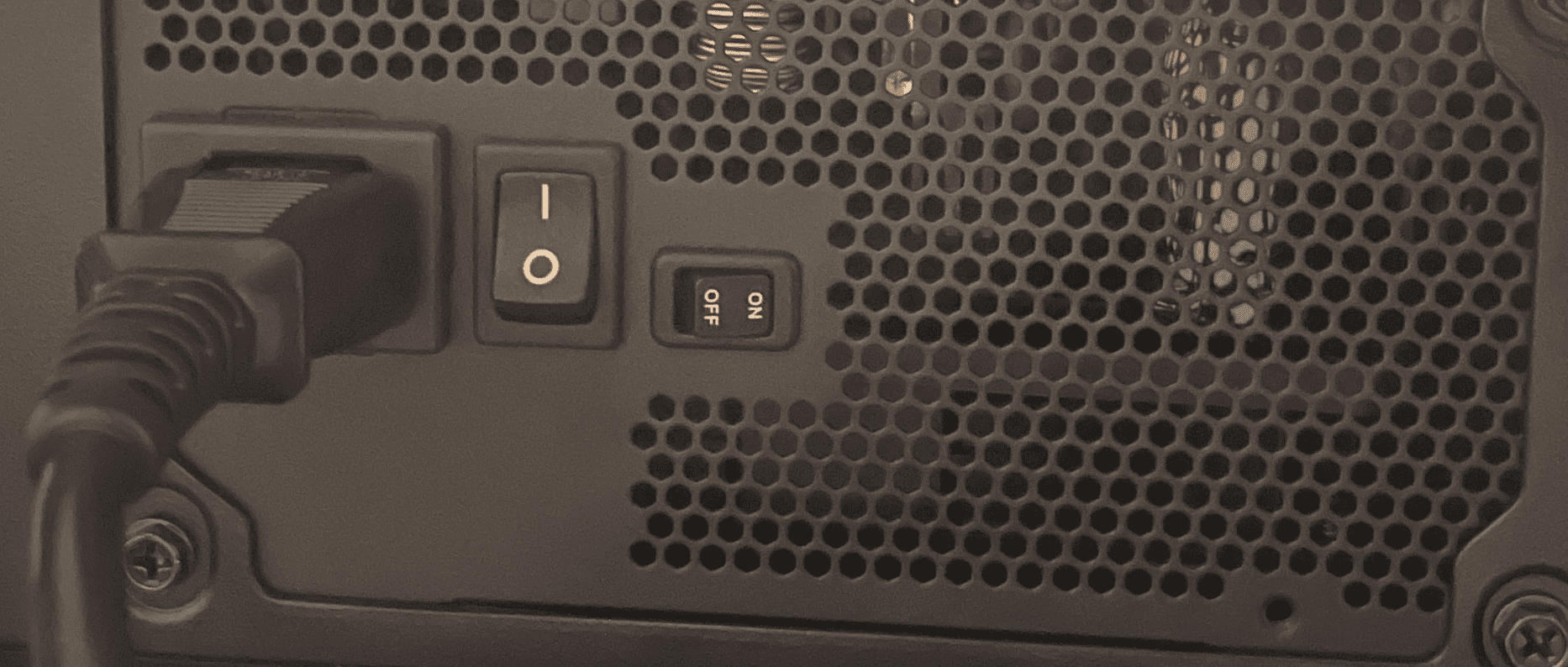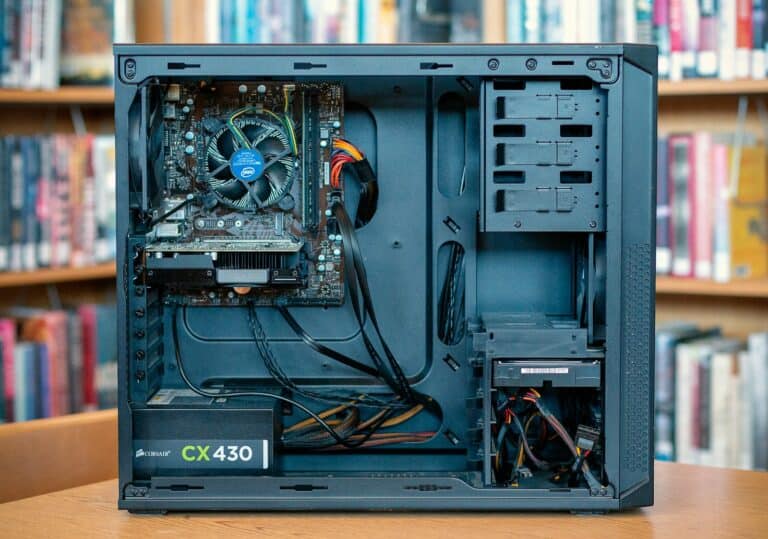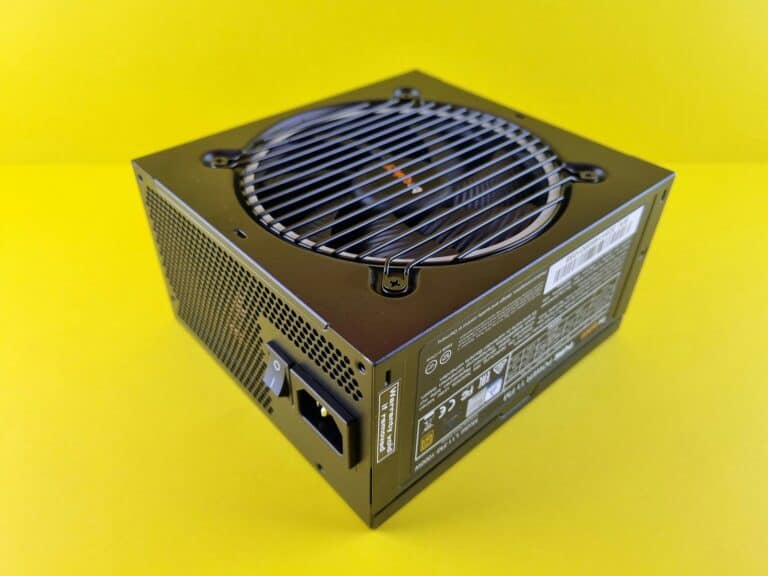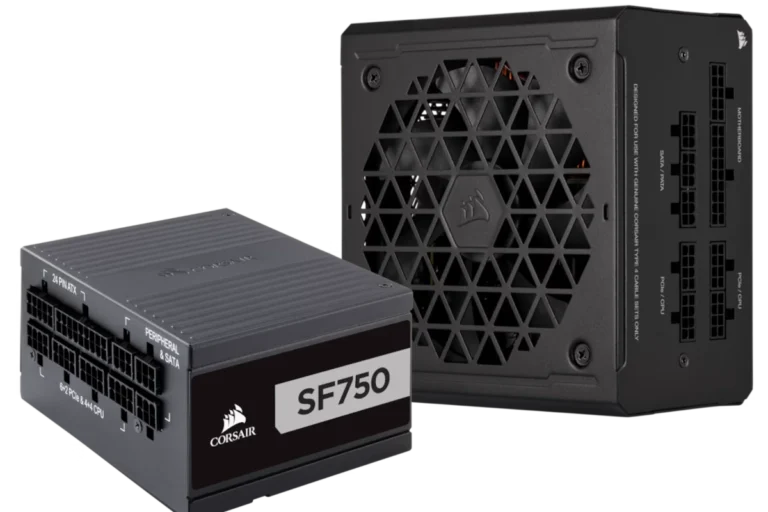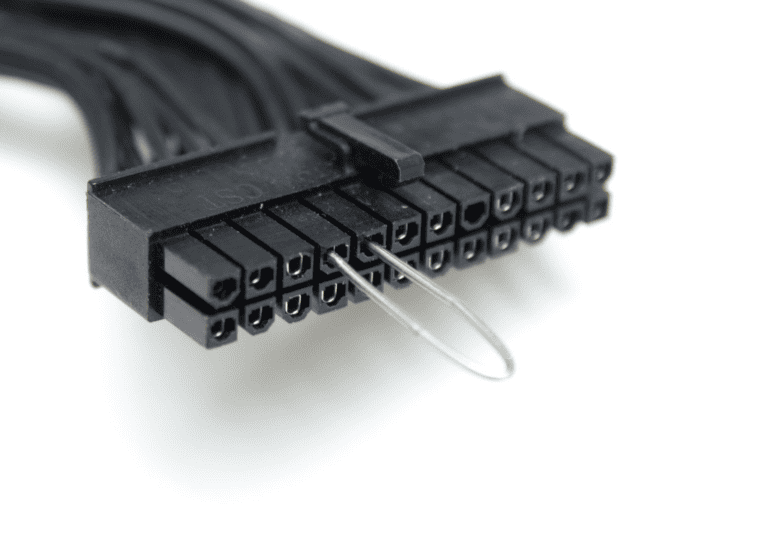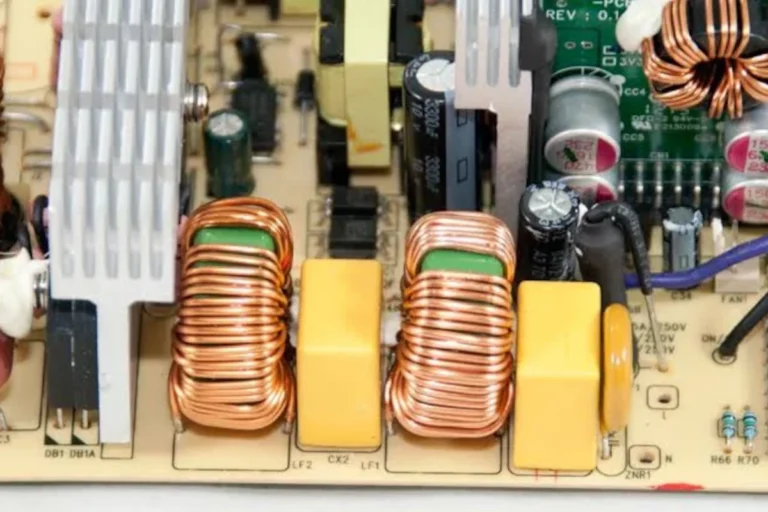Have you ever looked at your power supply unit (PSU) and wondered why there are two power switches? You’ll see the one that you’re familiar with that controls whether any power flows into the system or not (the master switch) but then there’s a mysterious On/Off switch that you may not recognize next to it.
It’s a question that has puzzled many, from seasoned IT professionals to curious users. The answer lies in the functionality and customization that these switches offer, enhancing both the performance and efficiency of your computer.
🔌 The Standard Power Switch
- What it is: A simple on/off rocker switch (usually marked with
Ifor ON andOfor OFF). - Function:
- Cuts power from the wall outlet to the PSU.
- Allows you to safely turn off the PSU without unplugging the cord.
- When to use it:
- Before working on your PC’s components.
- When troubleshooting power issues.
- To fully cut standby power (since even when “off,” the motherboard receives a small +5V standby current).
🔴 The Second Switch – Possible Explanations
Depending on your PSU model, the second switch could be one of the following:
1. Voltage Selector Switch (Older PSUs)
- Appearance: A small red switch labeled
115/230or110/220. - Purpose: Manually selects input voltage for different regions:
- 115V → North America, Japan.
- 230V → Europe, Asia, most of the world.
- Warning ⚠️: Setting this incorrectly can damage your PSU instantly.
- Modern PSUs: Most now use auto-switching and no longer include this.
2. Fan/Eco Mode Switch (Modern PSUs)
- Appearance: Sometimes labeled “Hybrid,” “Eco,” or “Fanless.”
- Purpose: Controls the cooling fan behavior:
- On (Eco Mode): Fan stays off at low loads for silent operation.
- Off (Normal Mode): Fan spins whenever PSU is powered.
- Benefit: Reduces noise and dust buildup when power draw is low.
3. Dual Power / Redundancy Switch (Server/Industrial PSUs)
- Use Case: Found in some server-grade or dual-PSU setups.
- Purpose: Allows switching between two power sources for redundancy.
- Consumer PCs: Rarely seen outside enterprise hardware.
🧾 How to Identify Which Switch You Have
- Check the labels – Look for markings like
115/230,Eco, orFan Mode. - Consult the PSU manual – Manufacturers explain switch functions.
- Look up your PSU model online – Avoid guessing, especially with voltage switches.
✅ Quick Safety Tips
- Always turn off the main rocker switch (or unplug) before working inside your PC.
- Never change a voltage selector switch unless you are 100% sure of your country’s mains voltage.
- Use the Eco/Fan switch based on your preference for noise vs. cooling.
🔍 Final Thoughts
If your PSU has two switches, one will always be the main power switch. The second is either:
- A voltage selector (older PSUs), or
- A fan/eco mode toggle (modern PSUs).
Knowing which one you have prevents mistakes and helps you get the best performance and safety out of your power supply.
PSU Switch Overview – PSUs With 2 Switches
If you’ve ever looked at the back of your PC’s power supply unit (PSU) and noticed two switches, you might be wondering what they’re for. Most PSUs only have a single main power switch, but some designs include an extra one. Let’s break it down.
| Feature | Master Switch | Eco Switch |
|---|---|---|
| Primary Function | Controls overall power to the PSU | Manages power-saving mode (usually fan operation) |
| Location | Typically on the back of the PSU | Often near the master switch or on a different side |
| Labeling | Usually labeled “Master” or “I/O” | May be labeled “Eco,” “Zero Fan,” “Silent Mode,” or have a fan icon |
| Default Position | Usually ON by default | Usually OFF by default |
| Effect on Power Supply Operation | Turning it OFF completely cuts power to the PSU | Turning it OFF may disable eco mode, causing fans to run continuously |
| When to Use | Use when you want to completely shut down the PSU, such as during maintenance or cleaning | Use when you want to prioritize quiet operation or reduce energy consumption in low-load scenarios |
Additional Notes:
- Consult your PSU’s manual: It’s always best to refer to your PSU’s manual for specific instructions and features related to the switches.
- Eco mode benefits: Using eco mode can help reduce fan noise and power consumption, but it may slightly raise PSU temperatures under load.
- High-power systems: In systems with high power requirements, it’s often recommended to keep eco mode disabled for optimal cooling.
- Switch positions: The exact switch positions (ON/OFF) and their meanings may vary between PSU models.
- Alternative eco modes: Some PSUs may have software-controlled eco modes instead of a physical switch.
Key Takeaways
- Functionality: Dual switches often control power saving modes and fan operations.
- User Experiences: Varied interpretations and uses based on personal preferences and system requirements.
- Technical Insights: Importance of understanding the specific functions and settings for optimal performance.
Understanding Dual Power Switches on PSUs
The Purpose of Dual Switches
Eco Mode and Fan Control
One of the most common reasons for having two switches on a PSU is to control the eco mode and fan operations. As discussed in a Reddit thread on r/computers, one switch typically enables a power-saving mode, which turns off the fan until the PSU reaches a certain temperature. This feature is particularly useful for those seeking a quieter operation or lower energy consumption.
Hybrid Mode
Another user on the same thread mentioned the term “Hybrid mode.” In this setting, the fans only activate under load, helping to reduce noise and save energy when the system is not heavily used.
User Perspectives and Experiences
Diverse Opinions
The discussion on Reddit reveals a range of experiences and opinions. Some users, like those in the r/MSI_Gaming subreddit, appreciate the silent operation that the eco mode offers. Others are intrigued by the novelty of such a feature, having never encountered it in their years of IT experience.
Practical Scenarios
In real-world applications, the choice of using eco mode or keeping the fan always on depends on individual needs. For instance, a user running high-performance tasks might prefer the fan to be on constantly to ensure adequate cooling.
Technical Aspects and Advancements
Understanding Your PSU
It’s crucial to understand the specific functions of the switches on your PSU. As one Reddit user humorously suggested, reading the manual (RTFM) can provide valuable insights into the capabilities and best practices for your PSU’s features.
Technological Progress
The inclusion of these switches is a testament to the advancements in PSU technology, offering users more control over their system’s performance and energy consumption.
Real-World Applications
Energy Efficiency
For those conscious about energy usage, the eco mode can significantly reduce power consumption, especially in systems that are operational but not always under heavy load.
Noise Reduction
Users sensitive to noise will find the silent operation in eco mode beneficial, particularly in quiet environments like libraries or home offices.
Incorporating User Experiences and Technical Knowledge
The insights from real users, combined with technical knowledge, paint a comprehensive picture of the dual switches’ functionality. It’s not just about having an extra switch; it’s about customizing your system to fit your specific needs and preferences.
FAQs: Clarifying Common Queries
- What does the eco mode switch do on a PSU?
- It enables a power-saving mode, turning off the fan until the PSU heats up to a certain temperature.
- Is it better to keep the PSU fan always on or use eco mode?
- This depends on your system’s usage and environment. Eco mode is quieter and saves energy, while always-on ensures constant cooling.
- Can using eco mode harm my computer?
- Not typically, but it’s important to monitor system temperatures, especially during heavy usage.
- Do all PSUs have dual switches?
- No, this feature varies depending on the PSU model and brand.
- How do I know if my PSU has an eco mode?
- Check the PSU’s manual or look for a switch labeled accordingly.
By understanding the purpose and functionality of dual switches on PSUs, users can optimize their systems for efficiency, performance, and personal preferences. Whether it’s for energy savings, noise reduction, or just curiosity, these switches offer a level of control that reflects the evolving nature of computer hardware technology.

